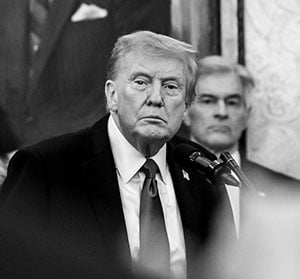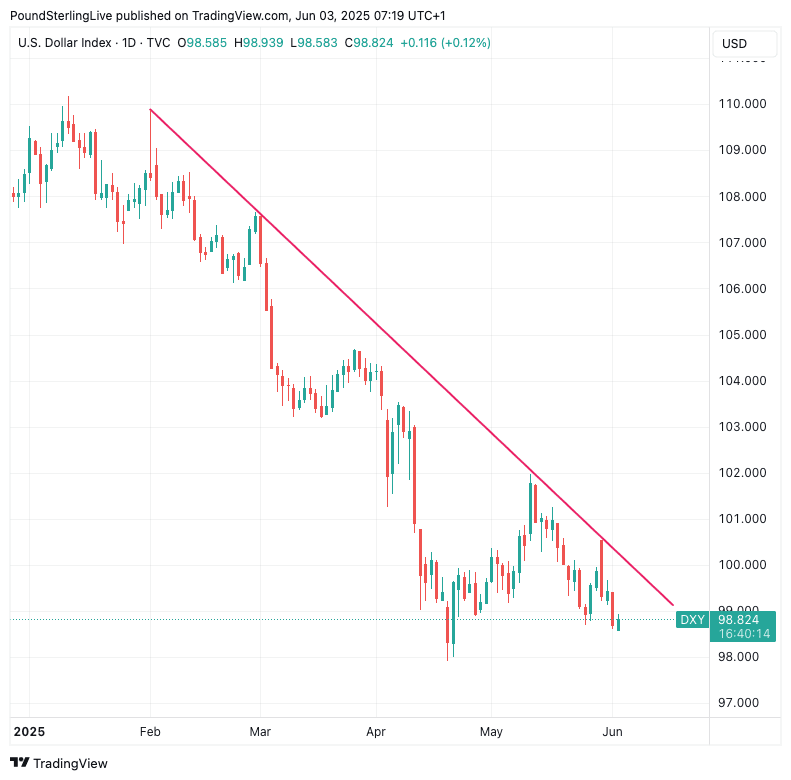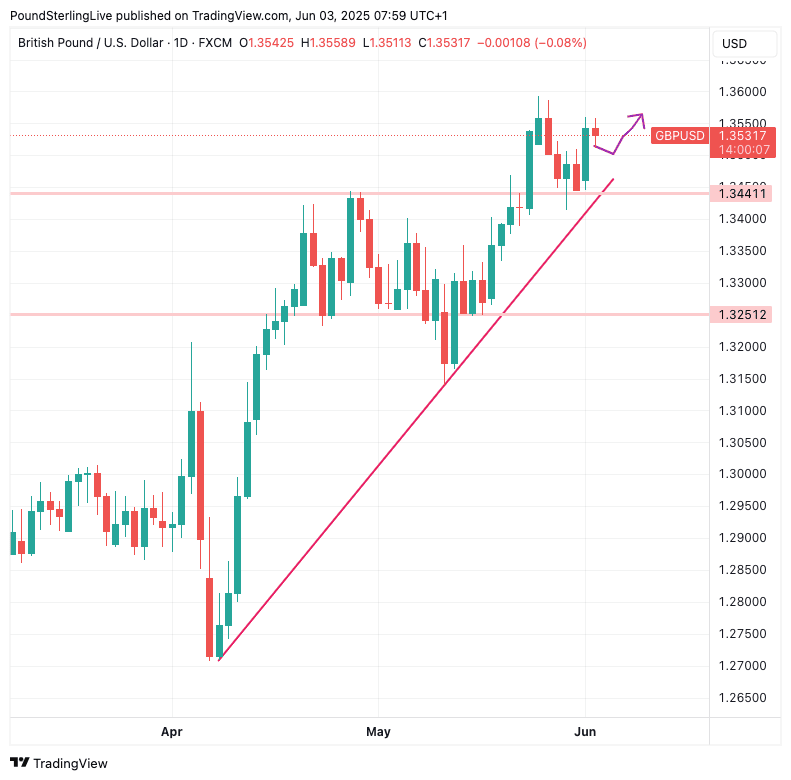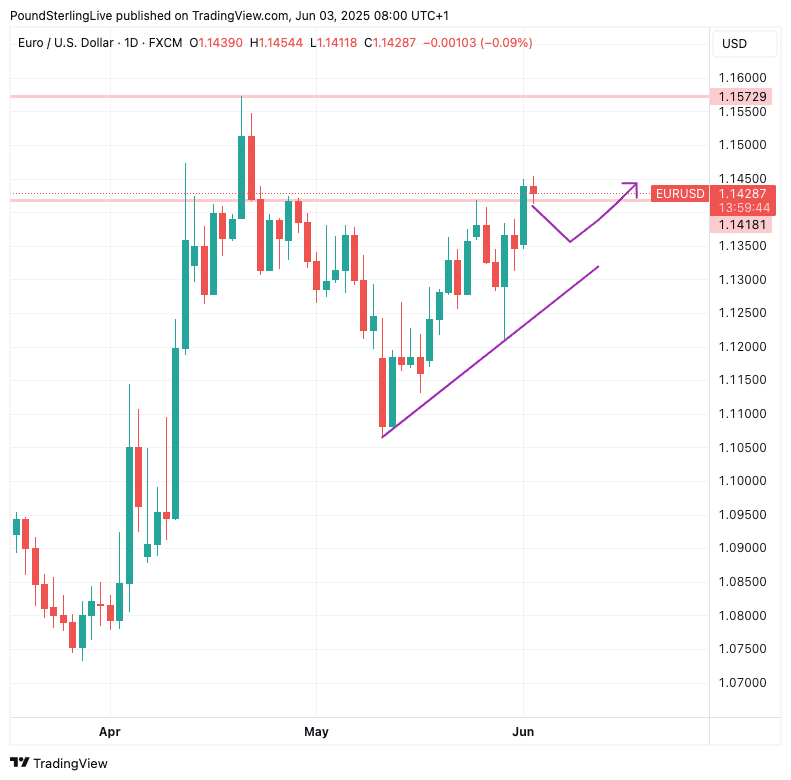Dollar Penalised by Trump's "Revenge Tax"
- Written by: Gary Howes

Image © Adobe Images
The proposed "Revenge Tax" is another reason to sell dollars.
A "revenge tax" provision in Section 899 of the "One Big Beautiful Bill Act" is the latest headache facing global investors and the U.S. Dollar, according to analysts.
It would authorise the U.S. Treasury to impose up to a 20% tax on passive income - such as dividends, interest, and royalties - earned by foreign investors from countries identified as having "discriminatory" tax regimes against U.S. firms.
The tax is expected by analysts to accelerate the diversification of investment allocations away from the U.S., potentially exacerbating USD weakness.
GBP to USD Transfer Savings Calculator
How much are you sending from pounds to dollars?
Your potential USD savings on this GBP transfer:
$318
By using specialist providers vs high street banks
"The White House provides many other reasons for the U.S. dollar to weaken, such as the risk of imminent taxes on U.S. investments and the generally erratic policies that make investing difficult," says Michael Pfister, FX strategist at Commerzbank.
Currency analysts argue that because the U.S. runs a significant trade deficit, it must continue to attract foreign investment in order to maintain the Dollar's value.
President Trump’s ‘Big Beautiful Bill’ is set to add approximately USD 3.5 trillion to U.S. debt over a 10 year period, much of it will need to be bought by foreigners. Yet, Section 899 of the bill allows for the taxation of income received by foreign investors on their U.S. portfolio assets.
"The tax would be retaliatory on investors in countries with ‘discriminatory’ taxes on US entities like the digital services tax. Such a tax, if ever implemented, would be hugely damaging to confidence and investors’ appetite for U.S. securities," says MUFG Bank.
"The damage to the USD has been done and the funding of the dollar's two big holes - the budget and the current account - is now emerging as a market driver," says George Saravelos, head of FX analysis at Deutsche Bank.
Above: The Dollar index, a measure of broader USD performance.

"The U.S. in a precarious position to fund its deficits, which relies on the kindness of strangers," says Mark McCormick, analyst at TD Securities.
The ambiguity surrounding the scope of Section 899, particularly whether it applies to holdings like U.S. Treasury bonds, has unsettled financial markets. Analysts warn that taxing foreign-held U.S. Treasuries could diminish demand.
"A sharp slowdown in US inflows appears to be materialising," says Saravelos.
The post-WWII order allowed the U.S. government "to sell a slew of Treasury bonds to foreign investors, and the dollar to assume the position of dominant currency," explains Goldman Sachs. But, "re-making that order has the potential to erode these advantages."
Above: GBP/USD at daily intervals, with the annotations made in our latest Week Ahead Forecast.

The Dollar reached its highest levels since 2002 in 2024 as foreign investors sucked up U.S. bonds, stocks and other assets as the economy's strong growth promised outsized returns.
Although 2024 represented a peak, the U.S. exceptionalism trade started to build momentum in the mid-2010s as the U.S. economy refashioned itself following 2008's financial crisis, testament to its unrelenting dynamism.
The foreign investor tax adds to a growing list of concerns that end the exceptionalism trade, with tariffs being the chief focus up until now.
"We expect President Trump’s erratic policymaking is set to increase the number of 'Sell America' days," wrote Mansoor Mohi-uddin, Chief Economist at the Bank of Singapore. "That keeps us cautious on long-term Treasuries and the U.S. dollar."
Above: EUR/USD at daily intervals with the annotations made in our latest Euro-Dollar Week Ahead Forecast call.
An extension of the 2017 Tax Cuts and Jobs Act (TCJA) - a key component of the One Big Beautiful Bill Act - will cost $3.3 trillion over the next decade and $5.2 trillion if the package is made permanent, according to the Committee for a Responsible Federal Budget.
"The impact is also less sudden and dramatic, leaving more scope for this to play out over a longer period of time. The fiscal largesse points to upside risks to US long-term interest rates, which could eventually prove to be a headwind for both the economy and financial markets," says Rogier Quaedvlieg, an economist at ABN AMRO Bank N.V.
The One Big Beautiful Bill Act is expected to be signed into law by the President on July 04.







